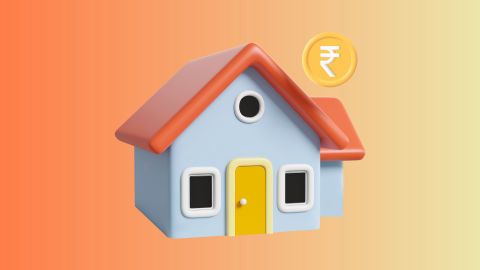Converting cubic yards to square feet can be confusing, especially when you are dealing with construction, landscaping, or renovation projects. However, understanding these units of measurement is crucial for accurate calculations, which in turn helps manage your material requirements and costs effectively.
Need funds for a construction project? With Bajaj Finserv Loan Against Property, you can easily finance large-scale projects and manage your cash flow efficiently. A Bajaj Finserv Loan Against Property can provide the financial boost you need, allowing you to focus on creating your vision without the stress of financial constraints. Check your loan against property eligibility in seconds.
Let’s dive into the details of converting cubic yards to square feet and how you can use these measurements in real-world situations.
What is a Cubic Yard?
A cubic yard is a unit of volume measurement commonly used in construction, landscaping, and material estimation. It measures the total space an object or material occupies. One cubic yard equals 27 cubic feet, calculated as a cube with dimensions of 3 feet by 3 feet by 3 feet. For example, when purchasing soil, gravel, or concrete, these materials are often sold by cubic yards, giving you an idea of the total volume you need.
Key Facts about Cubic Yards:
- 1 cubic yard = 27 cubic feet.
- Used for materials like concrete, soil, and gravel.
- Ideal for estimating bulk quantities in large projects.
What is Square Feet?
Square feet is a unit of area measurement used to describe the size of a flat surface, such as floors, walls, or landscapes. It is widely used in real estate and construction to calculate how much space is available or required. For instance, knowing the square footage of a room helps determine the amount of flooring material, paint, or tile you need.
Key Facts about Square Feet:
- 1 square foot = a square with sides measuring 1 foot each.
- Used for measuring surface areas.
- Commonly applied in home construction, interior design, and real estate.
Whether it is a small renovation or a major overhaul, having financial support can make the process hassle-free. Explore the benefits of Bajaj Finserv Loan Against Property to turn your ideas into reality. Check our offers on loan against property!
Cubic Yards to Square Feet: What is the Difference?
While cubic yards measure volume, square feet only measure area. Understanding the difference is essential because they are not interchangeable. Volume measures how much space something occupies in three dimensions (length, width, and height), while area only accounts for two dimensions (length and width).
For example, cubic yards are ideal for estimating the amount of soil or gravel required to fill an area, whereas square feet are used to measure the size of a floor or yard where the material will be spread.
How to Convert Cubic Yards to Square Feet?
To convert cubic yards to square feet, you first need to know the depth (or height) of the material you are spreading. Here is a step-by-step guide to help you:
- Measure the volume in cubic yards: Start by calculating how many cubic yards of material you have.
- Determine the depth: You must know how deep the material will be spread in feet.
- Apply the conversion formula: Multiply the number of cubic yards by 27 to get cubic feet. Then divide that by the depth to get square feet.
Practical Applications of Cubic Yards to Square Feet
Converting cubic yards to square feet is useful in various fields, such as:
- Landscaping: Estimating soil or mulch for garden beds.
- Construction: Calculating concrete or gravel for driveways and foundations.
- Interior design: Determining the amount of insulation needed for walls or ceilings.
Whether you are a homeowner or a contractor, understanding how these measurements work together can save time and prevent costly errors.
Common Scenarios for Conversion
- Landscaping projects: Determining how much mulch or soil is needed to cover a specific area.
- Home renovations: Estimating the amount of concrete required for a patio or walkway.
- Construction projects: Calculating materials for foundation work or large-scale builds.
In any scenario, converting correctly between cubic yards and square feet ensures that you order the right amount of material, avoiding both shortfalls and excesses.
Pro tip: Use loan against property not just for material costs but also for securing bulk discounts or hiring skilled professionals, maximising the value of your investment. Check your loan against property eligibility in seconds and take the first step toward seamless project execution.
Conclusion
Understanding the relationship between cubic yards and square feet is crucial in a variety of projects, from home improvement to professional construction work. With accurate conversions, you can better manage your materials and budget, ensuring a smooth workflow.
And if you need funds to finance your project, consider applying for a Loan Against Property with Bajaj Finance. With lower interest rates and flexible repayment terms, loan against property is a smart way to unlock your property's financial potential. Check your loan against property eligibility in seconds.




